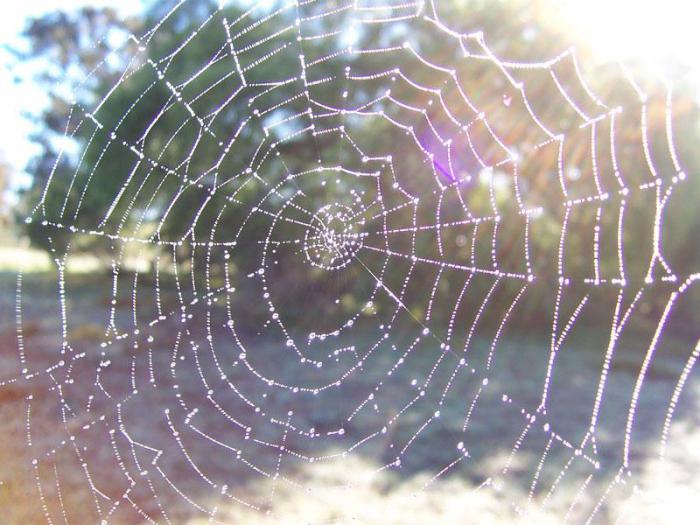All active volcanoes. The history of the six most dangerous volcanoes in the world
Yesterday it became known that the volcano Shiveluch in Kamchatka again intensified sharply and threw a column of ash 6 km high into the sky. We decided to bring a list of other active volcanoes that can cause people great trouble.
Etna, Italy
This volcano is the highest and most dangerous in Europe. More than once in the recent history of Italy, lava flows threatened the settlements of Sicily. On average, it erupts every three months. In 2008, a large eruption of Etna lasted a whole year. At the top of the volcano there are four permanent craters. When the lava erupts, its fragments are thrown thousands of meters up, and then settle in the idea of solid slag on the slopes of the volcano.

It should take about half a century, so that the channel along which the fire mass drained begins to overgrow with the first grass. Therefore, on Etna, vegetation zones alternate with zones completely lifeless. The land at the foot of Etna is very fertile. Therefore, despite constantly threatening local residents the danger, they do not hurry to move to other areas of Italy. Here also grow unique vineyards, which provide the whole country with excellent wine. Therefore, the foot of Etna is a very popular route for travelers, although quite insecure - no one can tell when the next major eruption will begin.
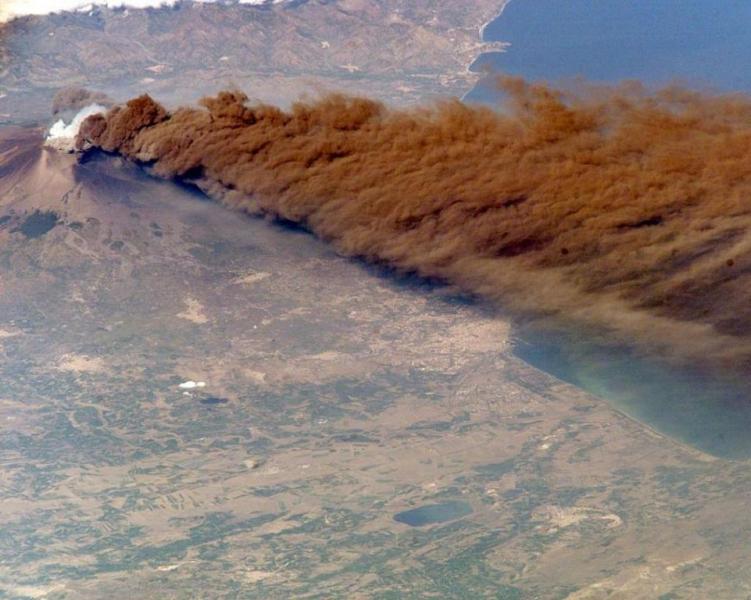
Merapi, Indonesia
This volcano, erupting regularly, regularly causes the death of many people who, with an enviable consistency, settle at its slopes. In 2006, five thousand people were killed and more than two hundred thousand were left homeless as a result of a major eruption. In 2010, a powerful eruption occurred again, but fortunately, most of the residents managed to evacuate, so there were no large casualties.
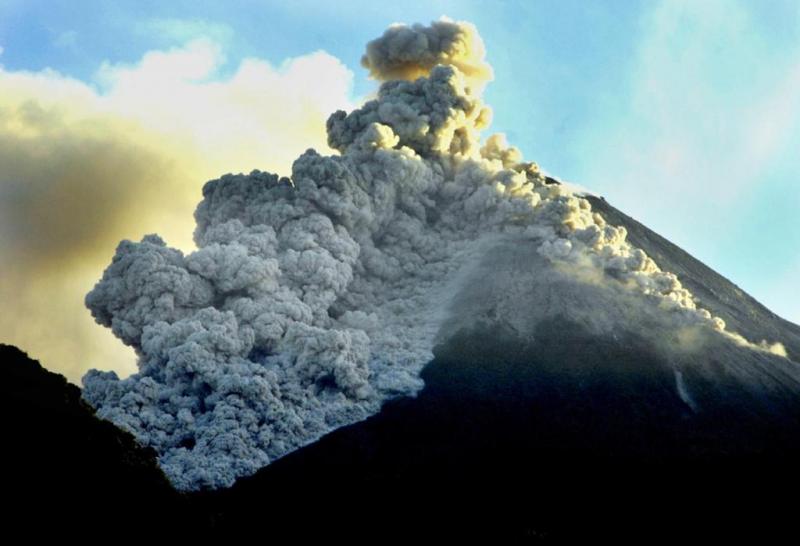
Small eruptions here happen twice a year, and large every seven to eight years. At the foot of the volcano there are wonderful temples and other sights, interesting for tourists, ready to experience their luck and visit these places. For example, at the Southern slope there is a complex of medieval Hindu and Buddhist temples, which is recognized by UNESCO as a World Heritage site, the royal palace of Ratu Boko.
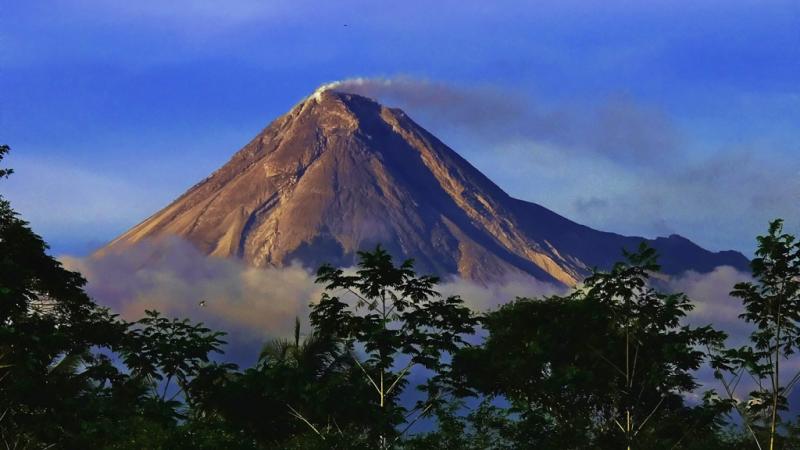
Popocatepetl, Mexico
This dormant killer is just 70 kilometers from Mexico City, home to nine million people. This volcano is the most dangerous of the other large volcanoes Mexico. The last eruption in 2000 forced tens of thousands of people to evacuate and even led to the melting of glaciers. From the Nahuatl language, the name of the volcano Popocatepetl is translated as a smoking hill.
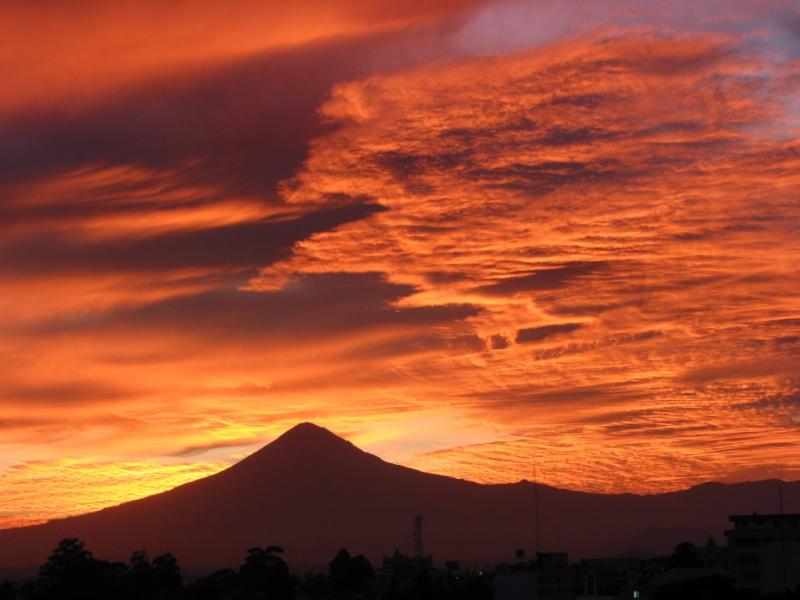
There were times when the volcano was thought to have calmed down forever, however, the giant always reminded itself of a menacing growl and a ferry escaping from the crater. The locals always respected the volcano with great respect, obviously because the land around them, abundantly strewn with volcanic ash, has always been very fertile, and the main crop - maize - was distinguished by its amazing taste. Popocatepetl attracts tourists, climbers and just romantics who want to touch the mysteries of an ancient volcano.
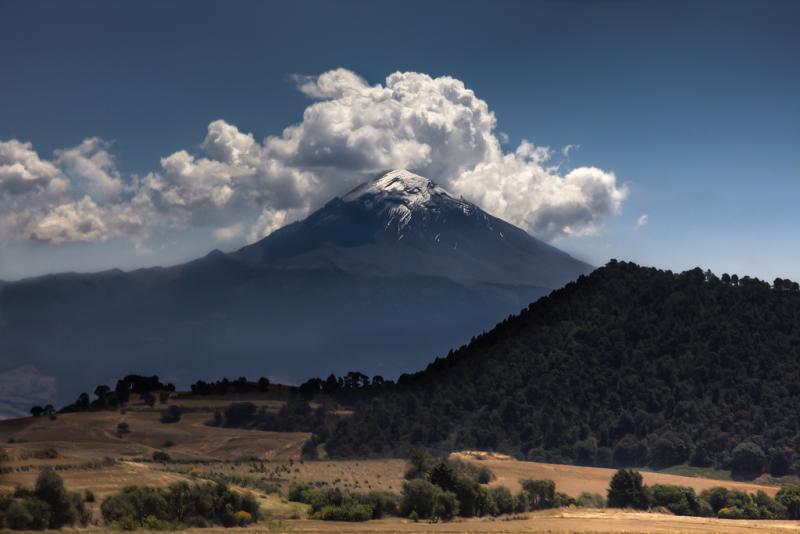
Sierra Negra, Galapagos Islands
This active volcano rises above sea level by more than a kilometer and has the second largest crater in the world, whose diameter is 11 kilometers. In 2005, there was a major recent eruption of the volcano. Tourists are attracted here by the beauty of the surrounding volcanoes of nature, as well as the opportunity to rise to the crater of a volcano and take a stroll on horseback along its edge and get acquainted with the amazing flora and fauna of the volcano's slopes, whose diversity contrasts sharply with the lifeless crater.
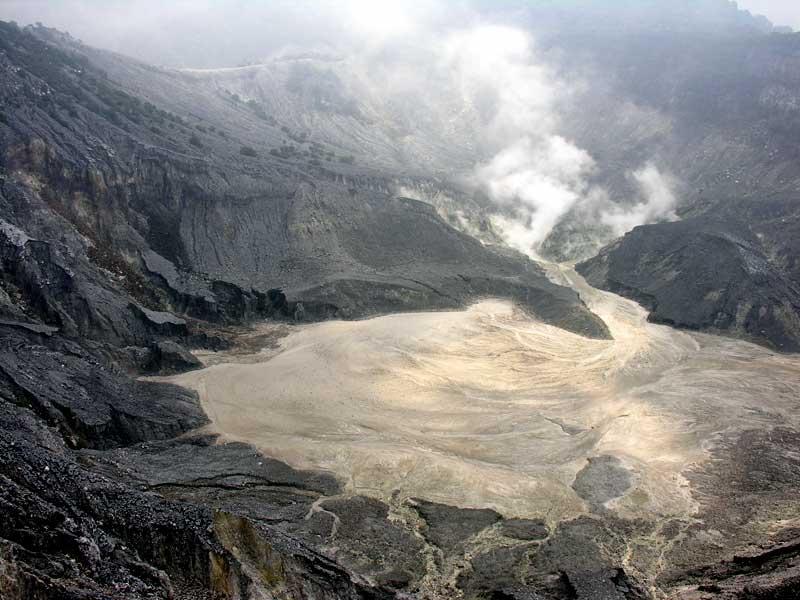
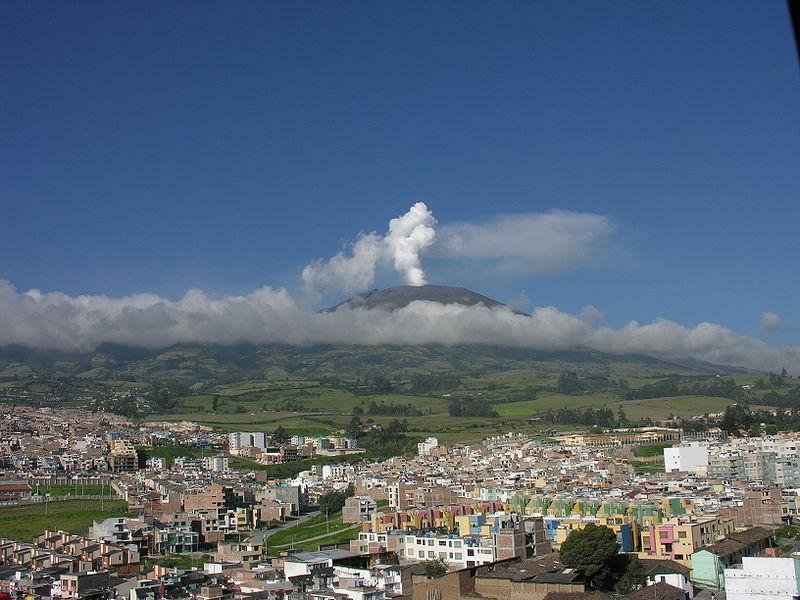
|
|||||||||||||||||||||
|
The eruption of the Grimsvotn volcano in the south-east of Iceland passed into the active phase on May 21, 2011. Active volcanoes along with earthquakes can be a great danger, and Indonesia is the undisputed record holder of the world both in terms of the number of volcanoes and in the earthquakes that occur on its territory. The largest archipelago of the planet is part of the so-called Pacific "Fire Ring" - a horseshoe-shaped strip of volcanoes and tectonic faults of 40 thousand kilometers in length. It encircles the Pacific Ocean, running along the coasts of South and North America to the southern part of Alaska, then turns to Japan, the Philippines and Indonesia and ends in the area of New Guinea, New Zealand and Southwest Oceania. It is in the "Ring of Fire" is almost 90% of about one and a half thousand famous volcanoes of the planet.
90% of all earthquakes on Earth also pass there.
The Merapi volcano in the central part of the Indonesian island of Java, whose height is about 3000 meters, is among the ten most active volcanoes of the planet. Its name is translated in several variants: "a place where the fire burns", "fiery mountain", "red fire". At the end of October 2010, Merapi went into the stage of an active eruption.
In the west of the island of Java is located 2.622-meter active volcano Papandayan, erupting most recently in 2002.
AFP / Mario Laporta
Vesuvius is the only active volcano in continental Europe. The height of Vesuvius is 1281 meters, the crater is about 750 meters in diameter. Vesuvius is not without reason is considered one of the most dangerous and the most famous volcanoes of the world, after all, it was almost 2 thousand years ago that one of the cities of the Roman Empire, known to all as Pompeii, was destroyed.
AFP / Fabrizio VILLA
Etna - an active volcano, located on the east coast of Sicily, near the cities of Messina and Catania. Its height can not be indicated accurately, as it constantly changes as a result of eruptions. By area, Etna occupies 1,250 square kilometers. As a result of lateral eruptions, Etna has 400 craters. On average, once every three months, the volcano erupts lava.
Yellowstone Caldera, located in Yellowstone National Park in the United States - the largest volcanic system in North America.
It is often called a "super volcano," as it was formed as a result of a catastrophic eruption 640,000 years ago. On the territory of the park there are about three thousand geysers, which makes up two thirds of all geysers in the world. In addition to Yellowstone, there are only four geyser fields in the world - the Valley of Geysers in Kamchatka, as well as fields in Iceland, Chile and New Zealand. In addition to the geysers, there are about ten thousand different geothermal sources in the park, including hot and hydrogen sulfide springs, mud volcanoes and many others. This is half of all geothermal sources in the world. In May 2001, the Yellowstone Volcanic Observatory was established. Its tasks include not only the observation of volcanic and geothermal activity, but also an assessment of the possible dangers associated with this activity.
The Sakurajima volcano is located on the island of Kyushu in the Japanese prefecture of Kagoshima, its height is 1117 meters. Sakurajima is a stratovolcano and refers to volcanoes of the first category, that is, it can start erupting at any time. Sakurajima almost constantly causes alarm among local residents, the last time the volcano was active in March 2009.
AFP / Marco Longari
Nyiragongo is an active volcano 3469 meters high, located in the Virunga mountains in central Africa and is considered one of the most dangerous volcanoes on the African continent.
Nyiragongo partially coincides with two more ancient volcanoes Barat and Shaheru, in addition, it is surrounded by hundreds of small smoldering lateral volcanic cones. Nyiraongo, together with neighboring Niamuragir, account for 40% of all observed eruptions in Africa.
AFP / Omar Torres
Most the famous volcano Mexico Popocatepetl is located just 40 kilometers southeast of the country's capital. The height of Popocatepetl above sea level is 5 thousand 452 meters. For a long time it was considered extinct, but in the mid-90s Popocatepetl began to show the first signs of activity, showing formidable temper and justifying its name, which in the translation from the Aztec language Nahuatl means Smoky Mountain. Since 1519 more than 20 large eruptions of the volcano Popocatepetl have been recorded.
Sierra Negra is an active volcano on the island of Isabela (Galapagos Islands). Sierra Negra has the second largest crater in the world with a diameter of 11 kilometers, its height above sea level is 1124 meters. The last volcanic eruption occurred in 2006.
AFP / Desire Martin
Teide is a volcano on the island of Tenerife, Spain's highest point. The height of the volcano is 3718 m, the relative height above the bottom of the Atlantic Ocean is 7500 m, is the highest peak in this ocean. The island of Tenerife is the third largest volcanic island in the world. Teide is currently asleep, the last eruption occurred in 1909.
Volcanoes play a huge role in creating the landscape of our land, and since I'm very fascinated by them, I'm pleased to know that there are active volcanoes that can be visited. Exciting, exciting and adventurous ... What could be better than climbing an active volcano? Here are some of the active volcanoes scattered all over the world that you can visit.
Since 1983, the Kilauea volcano has been constantly waking up, and today it is one of the most active volcanoes that you can visit. It is the youngest of the five volcanoes that form Hawaii, it is in the southern part of the island. Hawaiian name of the volcano "Kilauea" is translated as "greatly spreading". They called it that because of the constant eruption. Only experienced people can count on the fact that they will be able to climb there, because there are certain risks, and the requirements for training tourists are high. You can take excursions by boat and a helicopter to see the volcanic activity, especially how the lava flows into the sea.
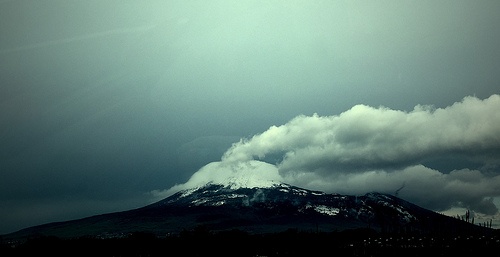
In the year 79 AD. This volcano erupted and destroyed the cities of Pompeii and Herculaneum. To date, tourists are given a very popular tour of the ruins of Pompeii. The volcano is considered inactive in the fall and spring, so this is an excellent time to visit. 1944 - the last time Vesuvius broke out. But the volcano is still carefully controlled, as about three million people live close enough and will be affected if it wakes up.
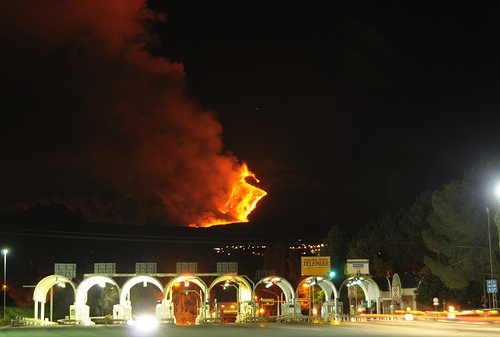
The Sicilian volcano Etna is the highest active volcano in Europe, about 3350 m high. The ancient Greeks believed that deep inside the core of the volcano Cyclops forged lightning for Zeus. Situated in the Etna Regional Park, Mount Etna is one of the most amazingly picturesque active volcanoes that you can see. In winter, you can go skiing, and in summer you can go hiking in this mountain. The last major volcanic eruption was in 2001, it is a fairly popular volcano among volcanologists.
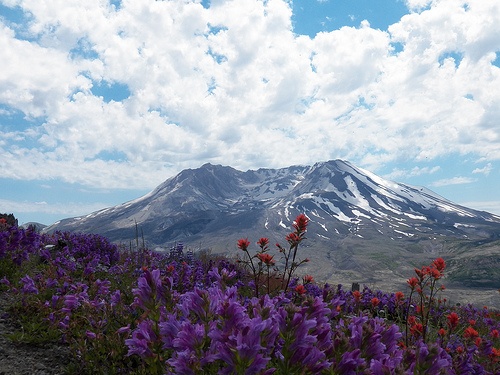
In 1980 there was a catastrophic eruption of this volcano, which lasted 9 hours. This was the most devastating eruption in the United States. The damage caused: 57 dead, 250 people left homeless, 298 km of roads, 24 km of rails destroyed, 47 bridges destroyed. Stable, at the moment, St. Helens is one of the volcanoes that you can visit and see the consequences of the recent eruption. You can climb to the top of the mountain and look at the damage done to forests and the landscape. The landscape, which is similar to the surface of the moon, is one of the reasons for visiting this active volcano.
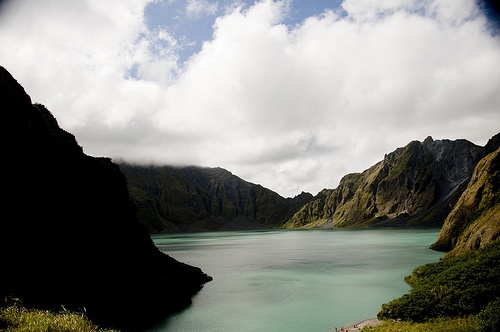
Located in the Philippines, Mount Pinatubo is a volcano, 1780 meters high. In 1991, after 600 years of hibernation, an eruption of this volcano occurred, which brought catastrophic results. During the nine hours of the eruption, more than 800 people died, and about 100,000 were left homeless. This was the second largest eruption of the 20th century. During the eruption, millions of tons of sulfur dioxide were poured into the atmosphere, which in subsequent years affected the world temperature. Now in the crater of the volcano is Lake Pinatubo, and one of the wonderful tours of the volcano allows you to see the beauty of this lake.

Located in Guatemala, this volcano regularly flares up since 1965. In a number of cases, during the eruptions, evacuation of numerous villages was required. This is one of the volcanoes that are very fond of climbing, but before you climb up, you need to pay for training courses, because several people died because of the eruption. A safer option is to take an excursion to this active volcano. In Guatemala you can find a lot of tour operators. On a clear day in Guatemala City you can enjoy a stunning view of the volcano eruption.
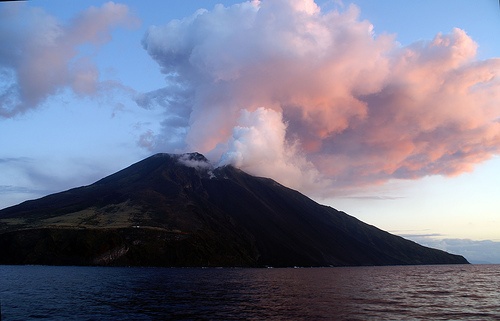
Stromboli Island, which is part of the Aeolian Islands, has the world's longest active period, spanning over 2,000 years. Because of its frequent eruptions, the volcano of Stromboli is called the "Lighthouse of the Mediterranean". Eruptions are caused by small gas explosions, which create "bubbles" of lava. These small eruptions can occur several times during each hour. If this type of eruption occurs in other volcanic chains, they are called "strombolic eruptions." There are constant tours that allow one to look at how such eruptions occur.
Of course, visiting active volcanoes is an adventure, but, of course, safety should be your main task. Guided tours are the best choice, because locals, as a rule, always know what is happening to their mountain. Have you ever climbed an active volcano?
The eruption of a volcano, whether it is the whim of nature or divine providence, poses a huge risk to a person. Blowing lava flows descending to the nearby plains, toxic volcanic ash that settles on the ground, smoke clouds hiding the sun - this is not all that awaits nearby settlements to the active volcano. The earth under the frozen lava turns to the deserted, lifeless mass, unsuitable for dwelling; and destruction brings catastrophic losses.
To prevent possible disasters, the International Association of Volcanology and Chemistry of the Earth, all dangerous volcanoes of the world were consolidated into a single list, and 24-hour observation of scientists was installed behind them. As soon as the volcano begins to prepare for awakening, local authorities immediately know about this and begin preparations for emergency measures. Below you will find full information about the most dangerous and famous volcanoes in the world.
Located on the south side of the Indonesian island of Java, the famous and fairly young Merapi volcano is also one of the largest and most powerful in the world. Its height is 2914 meters, and he himself became a real curse for the nearby town of Jyokyart. This "fiery mountain" regularly manifests its activity. Every 7 years there is a large volcanic eruption, and about 1 time in half a year is expected to be shallow.
The smoke clouds rise from the crater every day, as if reminding the inhabitants of the surrounding area of a possible danger. One of the most catastrophic eruptions of the Merapi volcano should be dated 1672 (1673). A powerful eruption erased a huge number of settlements on the island of Java, redirected about 10 rivers and led to the death of a significant number of residents.
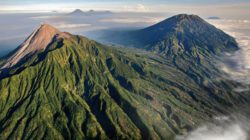
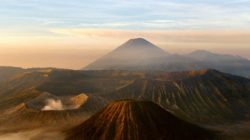
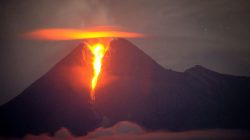
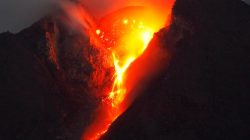
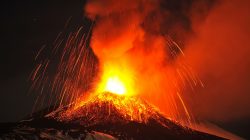
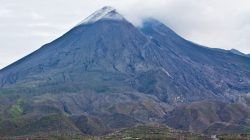
The great eruption of Merapi took place in 1906 as well. It was characterized by the destruction of the cone of the volcano itself. The explosion, which violated the integrity of the shell, was heard for hundreds of kilometers. In the XIX century, volcanologists have recorded nine major eruptions of the Merapi volcano. In the twentieth century, their number exceeded the indicator of 15.
One of the last famous eruptions active volcano occurred at the end of 2010. In view of the state of emergency, about 80,000 people were evacuated from nearby territories, but still failed to avoid casualties, more than 100 people were killed.
Sakurajima - never dormant
The active Sakurajima volcano is located on the south side of the Japanese island of Kyushu, near the picturesque city of Kagoshima. In altitude, the volcano reaches 1118 meters, and its activity since 1955 does not stop: a powerful eruption can occur at any time. One of the strongest was recorded in 1914.
From that moment, the island of Kyushu became a magmatic rock connected with the continent, poured from the mouth of Sakuradzim. This isthmus has turned into a kind of trail, famous among tourists and volcanologists, who from time to time come to. As for the residents of Kagoshima, they are used to a troubled neighborhood with an active volcano, conduct regular exercises in the event of emergency evacuation.
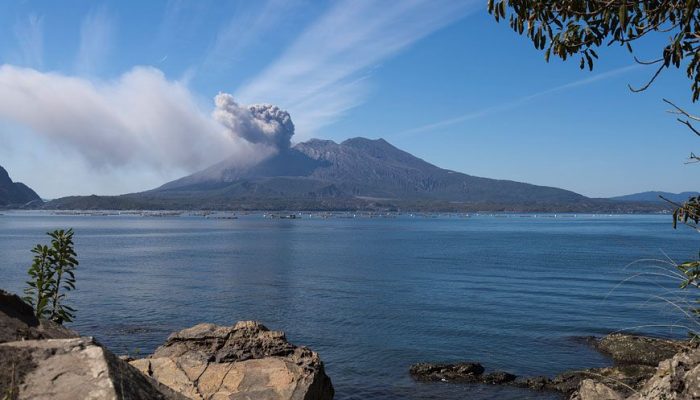
Behind the crater itself, continuous video surveillance is installed with the help of high-precision equipment, which sensitively captures all changes of the mountain-giant and transfers them to local researchers. In case of any changes, they immediately notify the authorities.
Yellowstone - American super-volcano
In the US state of Wyoming, in the heart of Yellowstone National Park is presumably the most powerful dormant volcano in the world. Its height reaches 3,142 meters.
According to volcanologists, the Yellowstone monster already had the 3 largest eruptions since its inception. Approximate time intervals between them are about 600,000 years.
In recent years there has been an increase in the activity of the famous american volcano, which manifests itself in overheating of geysers located on its slopes. Some of them instead of water throw up powerful streams of geothermal vapors. Since 2006, there has been a slight uplift of soil in several places at once. This again confirms the conjecture that the volcano passes into an active state.
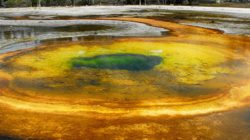
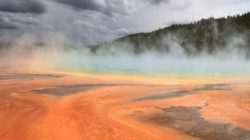
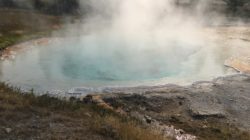
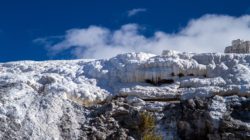

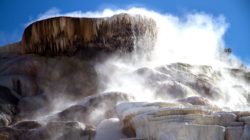
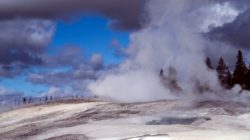
Popocatepetl - alluring mystery
In the state of Puebla, on the vast Mexican expanses, one of the most mysterious and unpredictable active volcanoes is located. Its height is 5452 meters, and the name in translation from the original language means "a hill that smokes." For a long time this volcano did not pose a great danger for the Latin American country and was considered completely extinct. However, since the end of the twentieth century, he openly announced his imminent awakening.
The ideal shape of the cone, a bottomless elliptical crater, even steep walls - over all this geometric splendor periodically appear large clouds of smoke.
Over the past 600 years, volcanologists have recorded about 25 quite powerful lava emissions from the depths of Popocatepetl. One of the last weak eruptions of the active volcano occurred in June 2011. In the case of a more serious explosion, the consequences can be catastrophic.
Vesuvius is a living legend
The operating and extraordinarily powerful is located not far from the Italian province of Napoli. Its height is 1281 meters. And he himself is considered one of the largest in the Apennines. Visually represents 3 combined cones, which can tell a lot about the past of this famous European volcano.
The main cone was created by mutual layering of tuff and frozen lava. It is in the middle between the outer arc-shaped shaft of Monte Somma and the internal temporal cone, which disappears with new powerful eruptions and then appears again. Vesuvius is a volcano that went down in history as the cause of the destruction of Stabia, Herculaneum and Pompeii in the year 79. Over the entire period of its existence, more than 80 powerful eruptions have been recorded. The last time the famous volcano was active in 1944, which caused serious damage to nearby territories.
Nyiragongo - the great and ruthless
The most active, large and dangerous volcano of the African continent is Nyiragongo. In just 150 years he erupted more than 30 times. And in some cases volcanic activity lasted for several months and even years. In 1977 there was a famous eruption, which claimed the lives of several hundred people. One of the most powerful was the eruption in 2002, when the lava, sweeping away everything in its path, destroyed the half-territories of the nearby city of Goma.
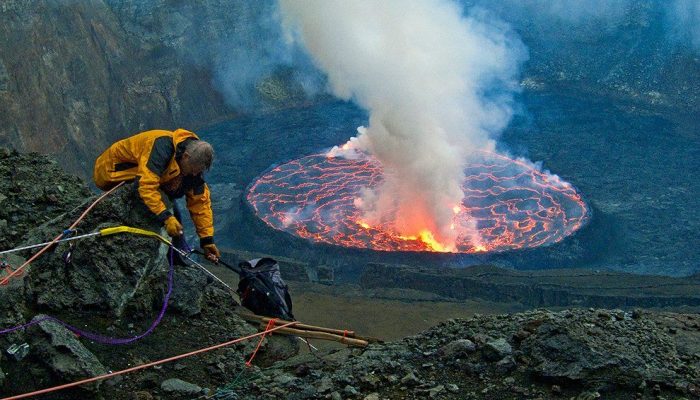
The lava of the volcano is quite liquid and extremely fluid, which is due to a lack of quartz in its composition. As a result, it moves with lightning speed, about 100 km / h. According to modern studies conducted by seismologists, the largest of all known eruptions of the Nyiragongo volcano is yet to come, and it can happen at any moment. The city of Goma will again be under the blow of a merciless monster.



